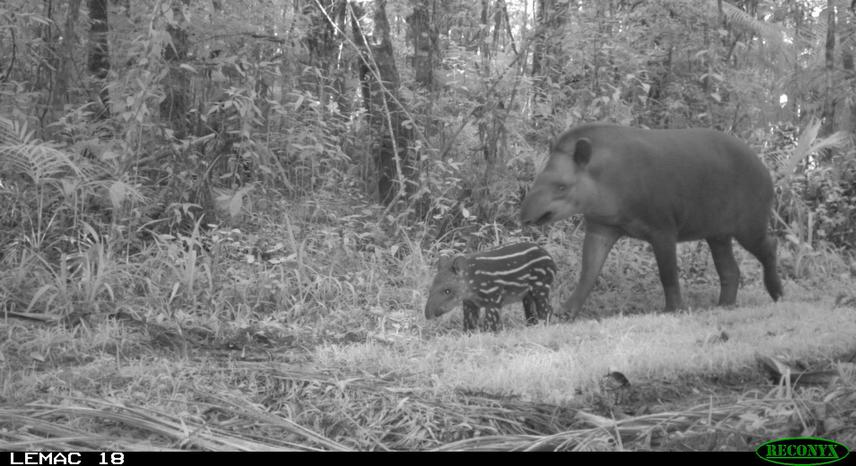Social media video featuring the project.
Fêmea com filhote
20 Apr 2016 Ribeira, Brazil, Central and Latin America Conflict | Mammals
Effects of Hunting and Population Density of Southern Muriqui (Brachyteles arachnoides) in the Atlantic Forest, Brazil
This project will allow assessing the conservation status and understanding of how human pressures can affect the occupation and population density of the specie.

In Brazil, the lowland tapir is classified as vulnerable to extinction; however, in the Atlantic Forest the species is listed as endangered. The category in the Atlantic Forest is higher due to the intense process of habitat loss and fragmentation that the biome has gone through over the years. Carlos Botelho State Park (CBSP) is one of the best preserved areas of Atlantic Forest in Brazil, representing a priority area for scientific research and conservation of lowland tapir.
Considering the importance to obtain information about the population of tapirs in Atlantic Forest preserved areas and the need to understand how human activities can impact key species of the ecosystem in these habitats, this project will assess the species' conservation status in CBSP and its Buffer Zone and understand how human pressures act on their occupation and population density. The main objectives are: estimate the population density of tapirs in CBSP; understand and map the threat factors; compare population density of tapirs in areas with different environmental characteristics and threat factors; analyze the probability of occupation by tapir according to environmental variables and threat factors.
Cameras traps will be used, arranged on a sampling grid with 60 captures stations, separated by a distance of 1 km. Interviews will be conducted on the properties present in the Buffer Zone, to a greater understanding of the occupation of the tapir and the occurrence of potential impacts to the species. The population density of tapirs will be estimated using capture-recapture model for closed populations. Occupancy models will be use to estimate the occupied area ratio and evaluate the effect of environmental variables and threat factors on the occupation of the tapir.
This project will enable the development of conservation strategies for tapirs, in order to reduce conflicting activities that may cause population declines or even local extinctions. Results from this study will substantiate an evaluation of the effectiveness of the camera-trap capture-recapture method, which is little used in tapir population studies. In addition, this project will contribute to the implementation of some actions included in the Lowland Tapir Conservation Action Plan.
This project will be carried out within the post-graduate program from the University of São Paulo (ESALQ/USP), Wildlife Ecology, Management and Conservation Lab, under supervision of PhD. Katia Ferraz, coordinator of the project "Trophic ecology, functional diversity and occurrence of terrestrial mammals in the Atlantic Forest" (FAPESP and Boticário Foudation).
Social media video featuring the project.
Fêmea com filhote